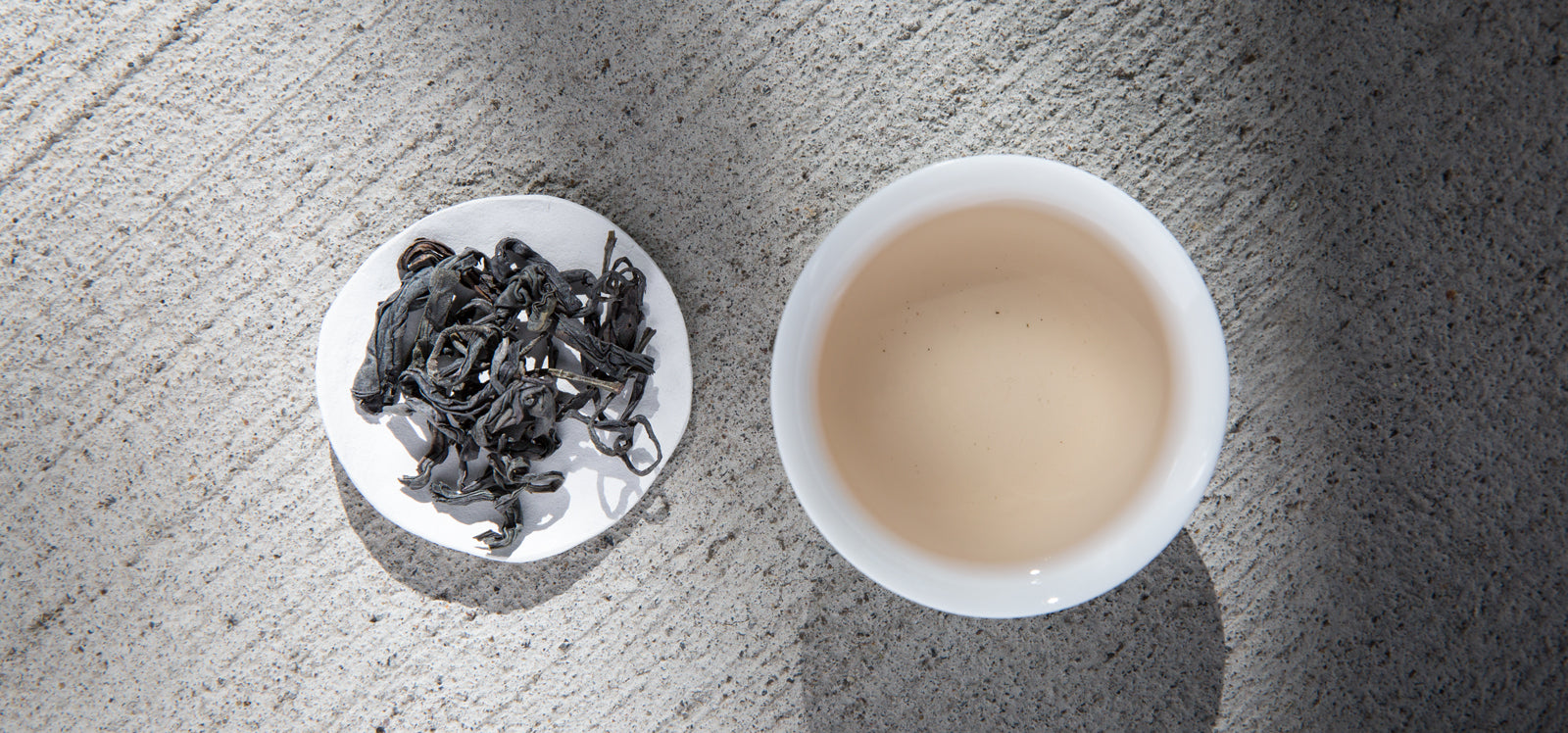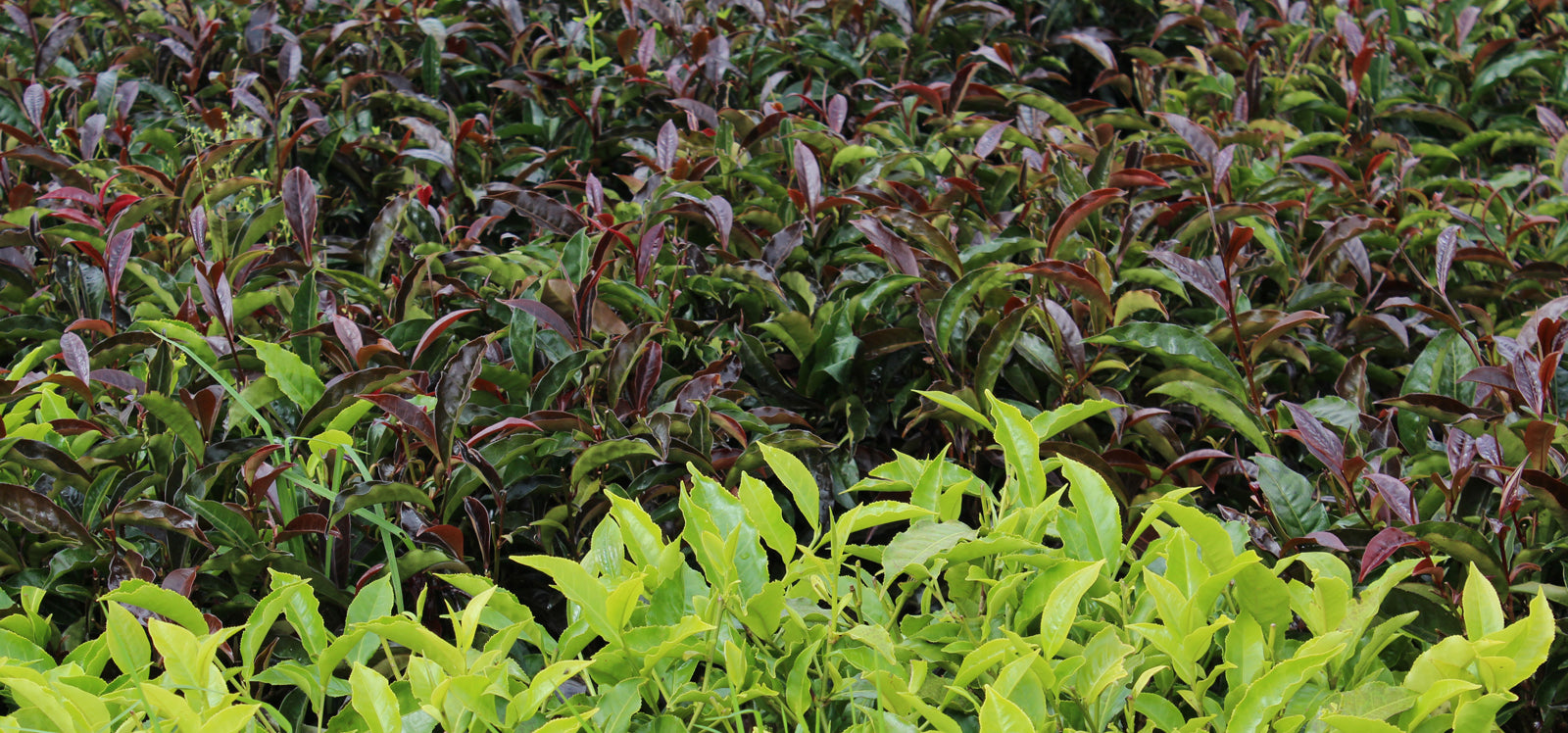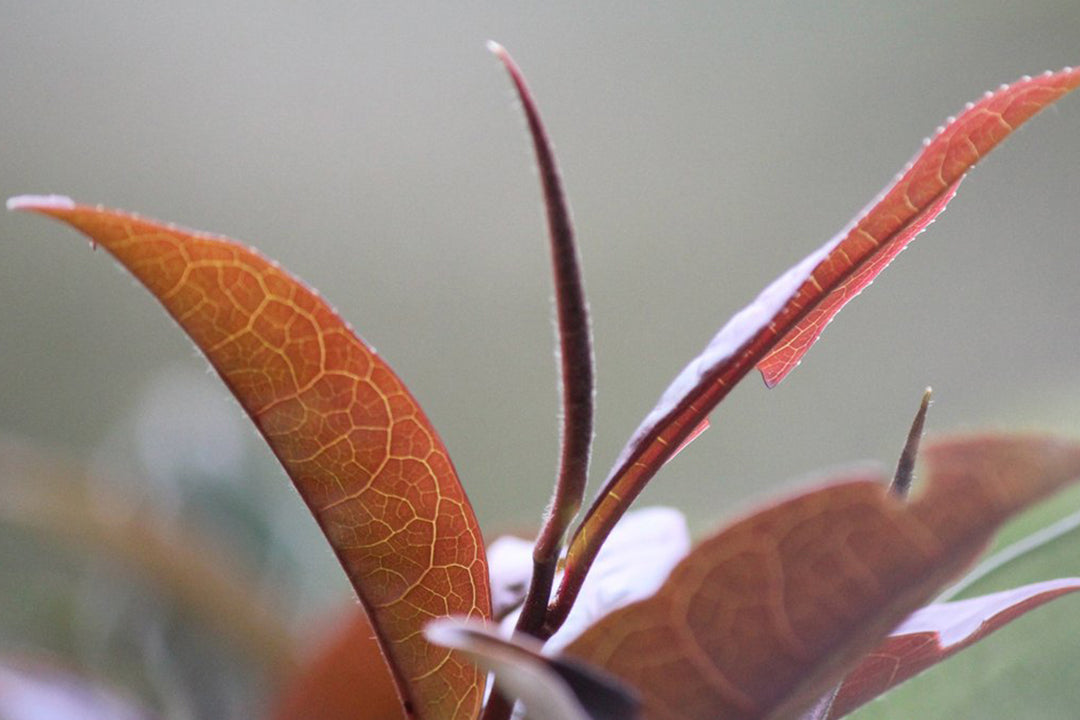Grown in Kenya, Purple Tea is the only known cultivar to contain anthocyanin, the flavonoid responsible for giving blueberries and pomegranates their purplish color.
A varietal of the Camellia sinensis var. assamica leaf, the leaves start out green and flush to a purple color as they mature. The leaf is not only a purple hue, but uniquely steeps to a light golden brew with a purple tint that visually intensifies with an added squeeze of lemon. It rightly does not belong in any other tea category, so the new category purple tea was created specifically for it.
The flavor is similar to a white tea — medium-bodied, fairly light and vegetal with a well-rounded mouth feel and a subtle sweet finish.

KENYA PURPLE TEA
Camellia sinensis var. assamica
light and well-rounded
subtle sweet finish
Shop Tea


The leaves of the Purple Tea varietal mature to a deep purple hue.
Purple tea is grown at high elevations (6000+ feet). Although the Tea Research Foundation of Kenya developed this cultivar over 25 years ago, it wasn’t until 2011 that the first seedlings were planted. Small-scale farmers had to be convinced to make a commitment to nurture the gardens for a full five years without any monetary return, which is the time it takes for the plants to reach maturity and be ready for initial harvest and production. Standards of plucking two leaves and a bud are strictly adhered to. Only the best leaves are used in purple tea’s small batch production.
When you purchase Purple Tea you benefit Kenyan farmers, helping to provide new opportunities of sustainable growth and employment for their families and communities.
BREW GUIDE: Brew 1-2 teaspoons of tea with 8 fl oz of water at 170-180 °F for 3 minutes.





